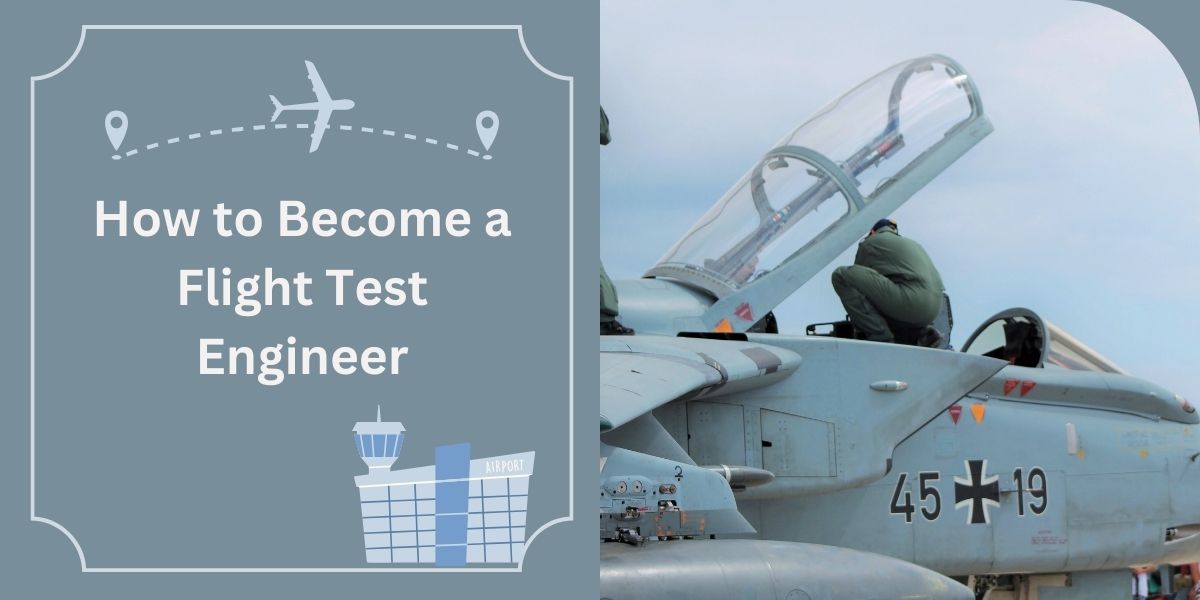Embarking on the journey to become a flight test engineer is an exciting endeavor. This path opens the doors to a career at the forefront of aviation innovation.
Flight test engineers determine if an aircraft is in the right condition to fly. They are usually skilled enough to work with various aircraft, and they go through a long and thorough process.
In this article, we will discuss what you need to know about flight test engineers, what they do, how to become one, relevant skills, career advancement, and their salary.
What is a flight test event?
Flight test events can happen on the ground or in the air. Each event tests a specific aspect of the aircraft’s performance and gathers data.
The flight test engineer and test pilot work together on the test plan, and the flight test engineer translates it into the “test cards” that are used during the execution of the event. “Test cards” are the shorthand script of what the test plan hopes to accomplish.
After the event, the flight test engineer is responsible for much of the tracking and documentation and sometimes plays a role in the analysis of the data. They can also focus on aircraft configuration.
What is a flight test engineer?
A flight test engineer is a professional who ensures that aircraft function properly before pilots use them for scheduled flights to transport cargo or passengers. Instead of creating new aircraft, flight test engineers confirm that existing aircraft are in working condition.
Flight test engineers check all components of aircraft so that they meet the performance standards that the Federal Aviation Administration sets.
They also plan test criteria depending on the specific aircraft they’re working with so that they can complete their checks efficiently. These professionals can work on everything from military planes to smaller ones meant for civilian use.
What does a flight test engineer do?
Here are some key responsibilities of a flight test engineer:
- Answer a pilot’s questions regarding initial flights
- Collaborate with other engineers to address issues
- Inspect the aircraft for any obvious issues
- Follow a pre-flight checklist to check for issues like poorly inflated tires or fluid leaks
- Monitor an aircraft’s computer systems once it’s airborne to determine any issues
- Test mechanical instruments like the pressure indicators, fuel gauges, landing gear, and wing flaps
- Study existing guides and technical manuals to learn more about an aircraft
- Contact part manufacturers for replacement parts as necessary
How to Become a Flight Test Engineer
Here’s a list of steps on how to become a flight test engineer:
1. Earn a bachelor’s degree in engineering
The first step to becoming a flight test engineer is to earn a bachelor’s degree in a relevant field. Many aspiring test engineers major in aerospace engineering.
They may also choose to major in related subjects like mechanical or electrical engineering. Universities usually don’t have undergraduate programs specifically for flight test engineering, so choosing a related engineering major is acceptable.
2. Earn a master’s degree in flight test engineering
Some people may become flight test engineers without a master’s degree, but this credential can provide the specialized knowledge they need to perform well in their roles.
Be sure to find a reputable organization with a comprehensive postgraduate flight test engineering program. While you pursue your master’s degree, you may complete a combination of traditional coursework and field training.
3. Gain on-the-job experience
Once you graduate from college with either your bachelor’s or master’s degree, you can gain on-the-job experience. Some aspiring professionals accept jobs at private companies where they receive thorough training.
You can also get thorough training from government agencies or military branches. Wherever you work first, you can receive instruction from experienced flight test engineers and gain feedback on how to perform your expected duties.
4. Earn certifications
Earning certifications can help you distinguish yourself from other candidates and show potential employers that you have the knowledge and skills to perform your expected duties.
Some universities may offer students the opportunity to earn certifications as part of their program. You may also seek certifications from nationally recognized organizations that specialize in engineering or flight test engineering.
Flight Test Engineering Process
The flight testing process involves a series of well-structured steps:
- Pre-flight Preparations and Checklists: Before each flight test, engineers meticulously prepare the aircraft, ensuring that all systems are functioning correctly and safety measures are in place.
- In-flight Monitoring and Data Recording: During the flight, flight test engineers closely monitor the aircraft’s performance and record vast amounts of data using advanced onboard instrumentation.
- Post-flight Analysis and Reporting: After the flight, engineers analyze the collected data to evaluate the aircraft’s behavior and performance. The findings are then reported to the design and development teams for further analysis and improvement.
Skills to Become a Flight Test Engineer
Flight test engineers possess a unique blend of technical expertise and personal qualities to excel in their roles.
- Technical Expertise in Aviation Systems: Flight Test Engineers have a comprehensive understanding of aircraft systems, aerodynamics, and aviation regulations.
- Analytical and Problem-Solving Abilities: They possess sharp analytical skills to interpret complex data and identify potential issues or areas for improvement.
- Attention to Detail and Safety-Consciousness: Flight Test Engineers prioritize safety and exercise meticulous attention to detail during test planning and execution.
How Much Does a Flight Test Engineer Make?
The average annual pay for a flight test engineer in the United States is $134,885 a year. That works out to be approximately $64.85 an hour. This is the equivalent of $2,593/week or $11,240/month.
While ZipRecruiter is seeing annual salaries as high as $204,000 and as low as $43,500, the majority of Flight Test Engineer salaries currently range between $105,500 (25th percentile) and $160,000 (75th percentile), with top earners (90th percentile) making $174,000 annually across the United States.
The average pay range for a flight test engineer varies greatly (by as much as $54,500), which suggests there may be many opportunities for advancement and increased pay based on skill level, location, and years of experience.
Work Environment for a Flight Test Engineer
The work environment for flight test engineers can vary. Some choose to pursue employment with the United States military, while others prefer to work for organizations like the Federal Aviation Administration (FAA) or the National Aeronautics and Space Administration (NASA).
Flight test engineers may also find work for commercial airlines, private airports, or manufacturing companies.
No matter where they work, flight test engineers have active jobs. They may move between different aircraft and work areas throughout the day. Flight test engineers are comfortable working in tight spaces and outdoors.
They may spend some of their time in an office setting as they create test schedules or write reports for other engineers to review.
Career Advancement for a Flight Test Engineer
There are several ways to advance your career as a flight test engineer. Some flight test engineers become pilots to better understand how aircraft work and what the ideal flying conditions are.
Others may decide to enter managerial roles where they become responsible for other flight test engineers. If you want to learn more about flight test engineering and qualify for higher pay, you can earn a doctorate degree in aeronautical engineering or a related field.
Job Outlook for Flight Test Engineers
While the Bureau of Labor Statistics doesn’t have any job outlook information for flight test engineers, it has data on aerospace engineers.
This related profession has a job outlook of 8% between 2020 and 2030. This growth is about as fast as the average for all occupations.
Aerospace engineers also have a slightly higher job outlook than other types of engineers, so you can expect ample job opportunities.
Advancements in Flight Test Engineering:
Flight test engineering continually evolves with advancements in technology.
- Innovations in Flight Test Technology: The integration of advanced sensors, data acquisition systems, and real-time telemetry enables more comprehensive and efficient flight testing.
- Impact of Digital Simulations and Virtual Testing: Virtual flight testing and simulations allow engineers to conduct initial assessments in a virtual environment, optimizing the test plan and minimizing risks before conducting physical tests.
Conclusion
As you progress in your career, continuous learning is key. Stay updated on industry developments, technological advancements, and regulatory requirements through professional development opportunities. This ensures you remain equipped to excel in the dynamic field of flight testing.
By following these steps and remaining dedicated to your pursuit of excellence, you can embark on a rewarding career as a flight test engineer, contributing to the advancement and safety of aviation technology for generations to come.




 Jobi.ng
Jobi.ng



